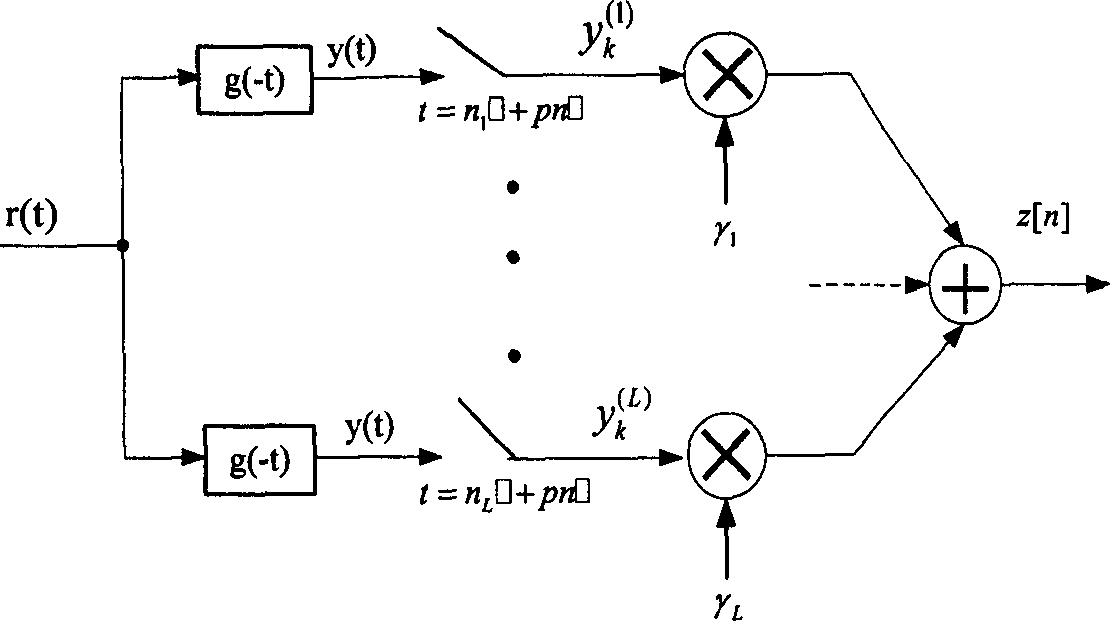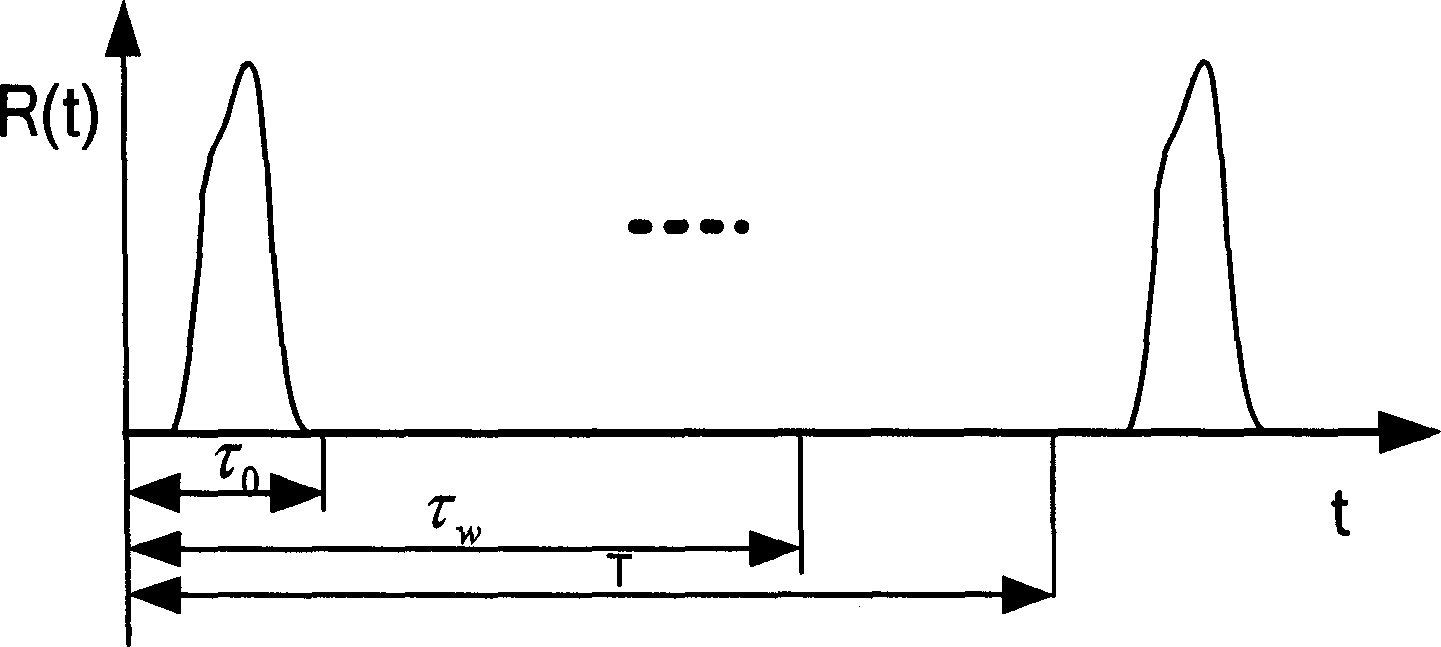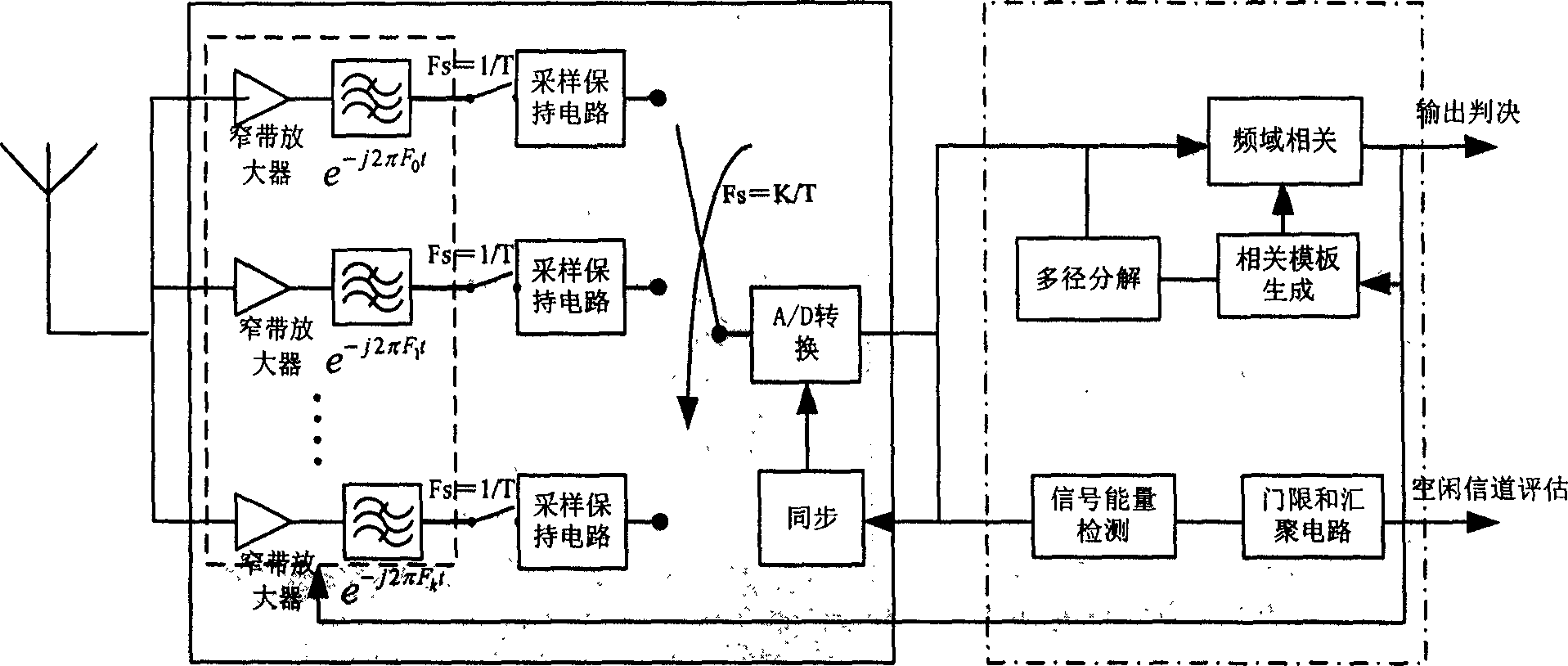Self adaptive frequency domain receiver for super broad band radio communication system and receiving method
A wireless communication system, self-adaptive technology, applied in the field of communication, can solve the problems of strict timing control, low interception rate, and increased complexity, and achieve the effects of avoiding delay branch circuits, good receiving performance, and low complexity
- Summary
- Abstract
- Description
- Claims
- Application Information
AI Technical Summary
Problems solved by technology
Method used
Image
Examples
Embodiment Construction
[0027] The invention discloses a new adaptive UWB receiving structure based on frequency-domain signal processing. Compared with other receiver structures, the receiver structure of the invention avoids the technical difficulties of UWB receiving system design, and can adopt very low The sampling rate samples the received signal, and all digital signal processing is in the frequency domain, which greatly reduces the complexity and power consumption of UWB chip design and implementation, and its performance is not much different from traditional high-complexity receivers . Among them, the design of the adaptive filter and the generation of the relevant reference template signal in the frequency domain are the keys to the design of the receiver structure.
[0028]According to the basic idea of the present invention, the frequency domain receiver of the present invention proposes a new technical solution based on the technical difficulties faced by the UWB receiver introduced i...
PUM
 Login to View More
Login to View More Abstract
Description
Claims
Application Information
 Login to View More
Login to View More - R&D
- Intellectual Property
- Life Sciences
- Materials
- Tech Scout
- Unparalleled Data Quality
- Higher Quality Content
- 60% Fewer Hallucinations
Browse by: Latest US Patents, China's latest patents, Technical Efficacy Thesaurus, Application Domain, Technology Topic, Popular Technical Reports.
© 2025 PatSnap. All rights reserved.Legal|Privacy policy|Modern Slavery Act Transparency Statement|Sitemap|About US| Contact US: help@patsnap.com



